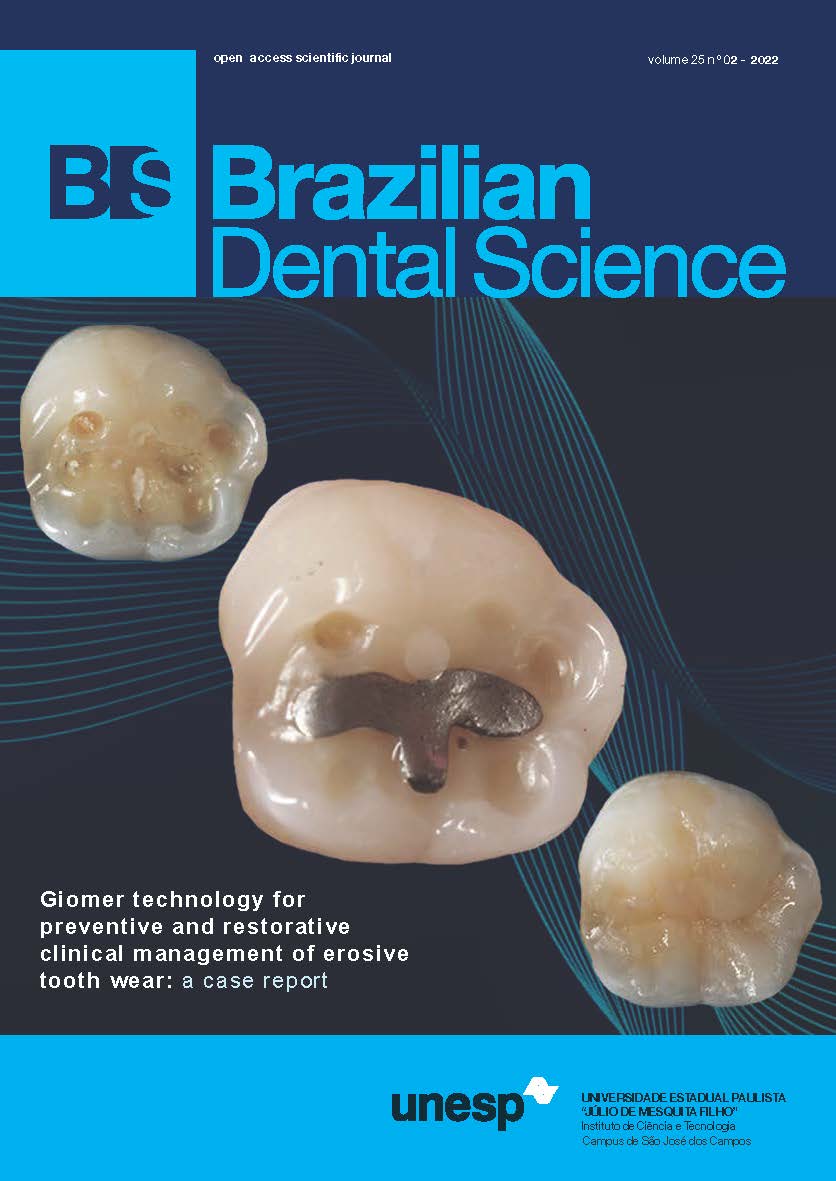Relationship between root canal merging and presence of C-shaped canal in fused rooted maxillary molar teeth
C-shaped Canals in Fused Maxillary Molars
DOI:
https://doi.org/10.4322/bds.2022.e2964Abstract
Objective: This study aimed to evaluate the prevalence of root fusion and the incidence of C-shaped canals in
maxillary first molar (MFM) and maxillary second molar (MSM) teeth using cone-beam computed tomography.
Material and Methods: In this study, a total of 1233 MFMs and 1406 MSMs from 802 patients were analyzed.
First, the number of fused rooted teeth and the type of root fusion were determined. Subsequently, incidence
and number of C-shaped canals were ascertained according to the type of fusion, location, position, and level
of canal merging in teeth with fused roots. Six types were established according to the C-shape configurations
observed. Presence of root fusion and the C-shaped canal according to gender, age, and tooth position were
evaluated by chi-square test. Values with p< 0.05 were considered significant in statistical tests. Results: The
incidence of fusion in the MFM and MSM teeth was 6.16% and 22.40%, respectively. Only three MFMs (0.24%)
and 3.77% of the MSMs had C-shaped canals. While the incidence of fusion was higher in women (p< 0.05),
the C-shaped morphology was not affected by sex (p> 0.05). Individuals over the age of 50 years had a lower
incidence of C-shaped canals (p< 0.05). Conclusion: C-shaped canal morphology was more commonly associated
with complex types of root fusion involving three roots; 16.83% of MSMs with fused roots had C-shaped canals.
KEYWORDS
Canal merging; Cone-beam computed tomography; C-shaped root canal; Root canal anatomy; Root fusion.
Downloads
Downloads
Published
How to Cite
Issue
Section
License
Brazilian Dental Science uses the Creative Commons (CC-BY 4.0) license, thus preserving the integrity of articles in an open access environment. The journal allows the author to retain publishing rights without restrictions.
=================




























